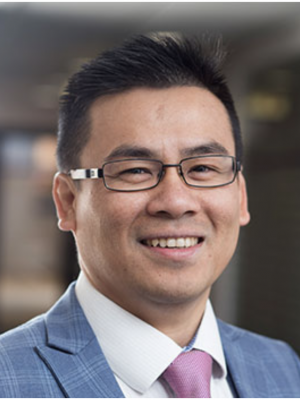GIBS is the only business school in South Africa to offer a consulting stream option as part of its MBA, an addition that was the brainchild of GIBS’s interim executive director for faculty, Hayley Pearson. As lead faculty on the consulting stream, I’ve witnessed first-hand how students have benefited from bridging academic theories with the process of developing and applying effective consulting toolkits in an interdisciplinary way.
Not every MBA who goes through the consulting stream will ultimately move into management consulting. Some will continue to focus on climbing the career jungle gym within corporates or pursuing entrepreneurial adventures. Irrespective of which professional paths they set their minds to, they can take this philosophy of leaders as master consultants in their organisations. After all, today’s master consultants are individuals skilled in providing expert advice to stakeholders and who co-create value to suit the particular context.
Ultimately, the goal for GIBS’s consulting stream is to develop leaders who demonstrate what Albert Einstein called "combinatory play". This ability to merge two or more unrelated ideas, concepts, disciplines or processes into a new and creative mental channel situationally is often touted as a way of boosting creativity. In fact, it can unlock more than just creativity. It may just be the skill that helps tomorrow’s leaders navigate the choppy and demanding waters of a rapidly changing world.
It is the unique leadership characteristics that a consulting mindset opens for all leaders that I find of particular interest, and which has led me to explore the notion of leader as master consultant.
The mindset one develops as a management consultant, and the tools that help apply this way of thinking, are by no means the preserve of the consulting sector. In fact, I believe they should be applied more widely to leadership development.
The many identities of value co-creation
To help me unpack this thinking I brainstormed with colleagues, fellow consultants and business executives, including Heloise Nel, managing partner of global advisory firm Egon Zehnder’s Johannesburg office. Nel is an inspirational people developer with a keen focus on advancing leaders.
We agreed that many of the characteristics of a good management and strategy consultant could be applied to leadership. Consulting professionals use an evidence-based approach to solve problems or spot opportunities, and they work collaboratively with clients to develop interventions and create value, oftentimes without the luxury of asserting their positional power to mobilise the stakeholders – simply because they had been given none to begin with. To co-create this kind of impact, they are often required to wear different hats.
Broadly speaking, I classify the various identities a consultant may flip between as follows:
- The maestro – who is abreast of all the latest information in the area of focus through constant learning and the synthesis of wisdom at a rapid pace.
- The scientist – who must eradicate biases and extrapolate insights to deal with unknown situations and an unknowable future.
- The activist – who sets out to improve something, catalyse strategic change, and must then advocate for what is valuable.
- The psychologist – who understands people and how to build togetherness while bringing the best qualities out of each stakeholder on the journey.
- The artist – who brings creativity, imagination and, oftentimes, counterfactual thinking to break the existing boundaries confined by unhelpful dominant logics.
- The hustling specialist – who brings a hustling attitude of urgency, agility and adaption, as well as a fluid never-say-die attitude and ability to navigate in complexity.
The core difference between leader and consultant
In considering the six identities, there is one glaring difference between the leadership role and the style and approach of consulting professionals: application.
As Nel points out, one of the criticisms levelled at management consultants is that they don’t implement, so they never take responsibility towards the end of the project and, as a result, they don’t learn how to live with their decisions. This is, Nel notes, a source of frustration for a lot of consultants, and a reason why some leave consulting to return to corporate, so they can “really be part of that end product”.
Despite this divergence, there is still enough in the consultancy approach to support effective leadership in a fast-changing world.
A route for leaders to follow?
By observing how seasoned consultants operate – and borrowing some of the tools in their playbooks – leaders across the spectrum can draw on the strengths of the six identifies as and when required to co-create value. Depending on the issue at hand, they might need to channel the creativity of the artist or the boldness of the hustle specialist; always ensuring that they stay true to their single, merged and authentic identity.
As a consultant, as well as someone who self-labels as a "pracademic" (practical academic), I understand the need to approach clients and situations contextually. Sometimes I must be more assertive if I feel my message isn’t getting through and the client is heading in the wrong direction (the maestro). Other times it’s important to set the stage for the client and draw out their own ability to spot the opportunities (the psychologist). Often its necessary to ignite enthusiasm and possibility (the artist) or to champion a cause of which others are uncertain (the activist).
This intentionality of shifting identities contextually should not be so marked that it appears inconsistent or phony. Rather, by "reading the room" the leader should be able to adapt to the needs of a given situation in order find the best avenue for unlocking value. As is the case with consultants, no identity should be a fixed and imposing force in the room, but should always be an invitation to collaborate.
This may seem like a big ask, but by harnessing the principles and philosophy of consulting, it is possible for leaders to not only apply this thinking to the way they interact with clients and develop their own people, but to how they make use of different identities and skills sets to promote a sense of ownership and intrapreneurship with their organisations.
Modernising the recipes
Top chefs use recipes to guide their own dish-making process and educate their sous chefs on how to assemble marvellous dishes. Not only do recipes provide guidance, they also enable chefs to modify and combine various recipes to suit a particular occasion without compromising the quality and consistency of the outcomes. In the consulting field, recipes are toolkits. Just like Michelin-starred chefs, who spend years mastering their range of special recipes, great leaders or effective consultants need to develop and polish their toolkits. These toolkits must serve the zeitgeist of the value creation pursuits in this modern time.
Consultants don’t just dream up ideas and possibilities, they make use of a range of models and frameworks, processes and assessment instruments which they combine in any number of ways. Bringing out the right recipe for a particular context is something we teach in the GIBS MBA consulting steam.
Sometimes it’s necessary to focus on organisational purpose or an immediate threat. Or it might be best to concentrate on innovation for new and bold opportunities. Every consultant has a toolkit of existing strategy frameworks, combinations and sequence designs, which can be combined into recipes on which the consultant can draw to provide clear guidelines and measuring scales.
Consultants take time and effort to develop these toolkits, tinkering with how best to use a swim lane process or an initiative prioritisation map in a given situation. Like a top chef, a great consultant doesn’t just use one recipe time and again, they fuse multiple approaches and ideas according to the context. Pattern matching is absolutely important, as is the ability to build a multiplicity of combinations and sequences. Additionally, all good chefs are also required to challenge some of the old recipes and find ways to improve them. So should leaders and consultants.
Much like a chef’s school, all the students on the GIBS consulting stream go through a rigorous process to develop their own toolkit. We train them to think, using multidisciplinary tools, so they can develop ways in which to identify and solve problems effectively. Above all, we want them to improve the existing tools and challenge whether some of these current tools could be applied differently. For instance, have you ever wondered how listing all relevant factors separately into four boxes on a SWOT analysis enables abductive thinking and helps organisations develop dynamic capability effectively? In truth, most people apply SWOT poorly.
Having been encouraged to challenge existing tools and create semi-bespoke toolkits, GIBS consulting stream students don’t merely develop recipes for the sake of developing them. They are compelled to apply their recipes in real-life situations and consult to actual organisations.
Believe it or not, all of us utilise certain sets of toolkits, consciously or subconsciously. Therefore, we should take the time to expand, revise, challenge and modify our own recipes to cultivate brilliance amid constant disruptions. As leaders, irrespective of the level at which we are leading, we should be asking ourselves how many of the six identities we have mastered and how we can best utilise these identities (in conjunction with our toolkits) to harness greater value in and for a complex and fast-changing world.
If we, as leaders, can only engage with one mindset and limited toolkits to address challenges, and if we do not have the adaptability to co-create impact with different stakeholders, what options do we have at our disposal when faced with challenging and unpredictable circumstances?
A consultant’s skills and mindsets
Heloise Nel’s six top consulting skills are a clear fit for any future-focused leader looking to add value within an organisation. They are:
- Talent attraction and retention. “Management consulting houses have a fantastic ability to attract and develop good talent,” says Nel.
- Development exposure. “We asked a class of executives what they would single out as the single biggest contributor to where they are now, and 70% said ‘stretch assignment.’ As a leader, if you have high potentials, give them a stretch assignment that ties to strategy and develop them,” says Nel.
- Curiosity and global insights. Here the focus on constantly evolving and broadening your thinking by attending seminars, reading, listening to podcasts and asking the right questions shines through. Once you have this body of knowledge, the next step is to connect the dots to your day job.
- High ownership and commerciality. “In consulting, your revenue, your invoicing is directly linked to output, so you have to be really thoughtful about how you apply your time,” says Nel. “So, it’s important to develop that sense of ownership.”
- Low bureaucracy. “In the consulting industry you do see more junior people making decisions on projects, and you don’t see that on the large corporates and so it [decision making] becomes onerous. Rather keep it flat and simple,” she says. In addition, consultants don’t have legions of internal meetings, everything is focused on clients.
- Influencing and networking. Corporates are not good at networking. Conversely, in consulting, industry connections – spanning industries – is vital. This positions consultants personally to take advantage of other opportunities and also exert positive influence. “If leaders can develop that skill of being able to influence, even if you don’t have position power, that is really important. You have to influence upwards, sidewards and not just rely on your position”.







